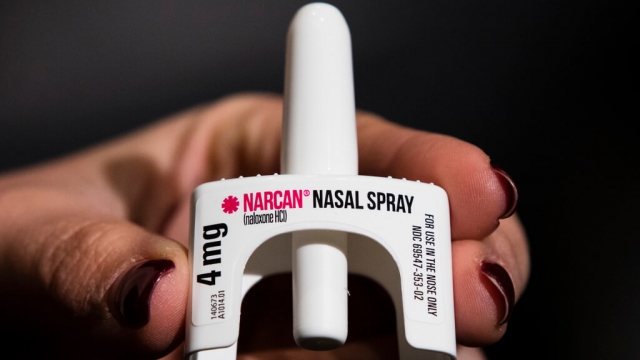What's in the nurse's office at your child's school? Band aids? Defibrillators? EpiPens? What about Naloxone?
Naloxone is a medication that rapidly reverses the effects of an opioid overdose, and across the country, schools are working to stock up as the opioid crisis takes an increasingly fatal toll on students.
"You hear all the time about students who are overdosing at school; this needs to be a tool that schools are utilizing to save kids' lives, right?" Lindsey Vuolo, Vice President of Health Law and Policy at the Partnership to End Addiction, said.
That's Lindsey Vuolo, Vice President of Health Law and Policy at the Partnership to End Addiction, and what Vuolo's saying is unfortunately true.
According to a 2022 studyin the Journal of the American Medical Association, adolescent overdose deaths jumped from 492 in 2019 to 1,146 in 2021. A roughly 42 percent spike.
"And now, with sort of the proliferation of fentanyl in the drug supply, it's really important to really have naloxone everywhere. And so that's where we've started seeing efforts to really get it into schools and get it into restaurants and bars and libraries, and vending machines," Vuolo said.
But as access to Naloxone increases, questions are being raised about what kind of message it sends to youth.
"That comes up very often. The whole question of, well, are we enabling the behavior by making reversal medication such as naloxone available easily for people?" Karen Pershing, Executive Director of the Metro Drug Coalition, said.
Karen Pershing is the executive director of the Metro Drug Coalition in Knoxville, Tennessee.
"And I can tell you that there's been a lot of research done on this, too, and that's just not the case. Naloxone can be lifesaving, but if it's taught right and you're talking to people, it's a temporary reversal," Pershing said.
SEE MORE: Biden administration offers support for GOP-led fentanyl bill
According to the National Library of Medicine, "Existing data on Naloxone distribution in community settings do not support this claim."
Pershing says she understands where the concern comes from but warns that not having the medication available, even in schools, is not a risk communities can afford to take.
"We have to think about, is it ultimately what we'd like, you know, having to push naloxone out there? Absolutely not. But we've got a tool. And so by not using that tool, we are denying people a chance at life," Pershing said.
But that hasn't stopped people from asking the question. Vuolo's team at the Partnership to End Addiction has even had to create a page on their website to address this question with parents.
She says the driving force behind this concern is a combination of a lack of understanding of how the medication works and the longstanding stigma that surrounds drug use.
"I think you still hear and feel some of that stigma among schools, like, 'Not our students; they're not those kinds of students,' which is just like, so stigmatized," Vuolo said.
Nevertheless, many schools are pushing ahead and keeping it available for emergencies.
The National Association of School Nurses has even endorsed "Naloxone in the school setting" as part of "emergency preparedness and response plans."
And school nurses aren't the only ones being trained to utilize Naloxone in emergencies.
"Back in November, December, we had a group of students from Durango High Schoolwho were really concerned about the possibility of there being an accidental overdose in school. And they knew that currently they weren't allowed to carry it," Dr. Karen Cheser, Superintendent of Durango School District 9-R, said.
SEE MORE: There is now a safe way for K-9s to be trained to detect fentanyl
"Since December of 2021, we've had it in all of our schools. So our health providers and others can do that. They've been trained. Thankfully, we have never had to use it even for an accidental sort of, you know, overdose or touching, you know, fentanyl or that sort of thing," Cheser said.
According to Cheser, that request was the first of its kind by high school students in Colorado, prompting a series of legal and community-based discussions.
"Again, since it had not happened before in the state, we didn't have any exemplars. So, we had to work with our attorneys to determine how we might do this in a way that protects the school district, that protects our students, our families," Cheser said.
In April, the district finalized a policy allowing students to be able to carry andadminister Narcan, a brand name of Naloxone, on campus.
Cheser says parents are required to sign a waiver, and students must complete a training course before they can carry the medication, which is distributed by school health providers.
"I would not be telling a truth if I didn't say it was daunting; this idea to be one of the first, we really had to weigh the pros and cons. And when it came down to it, the pros of possibly saving lives and giving our kids the tools that they need and the resources just ended up, you know, outweigh the possible consequences," Cheser said.
Ultimately, each school district varies in how it chooses to address drug abuse concerns, and those conversations will only continue to evolve. But Pershing says one thing is very clear:
"We do know that people can find recovery. But you can't find recovery if you're no longer with us," Pershing said.
Trending stories at Scrippsnews.com



